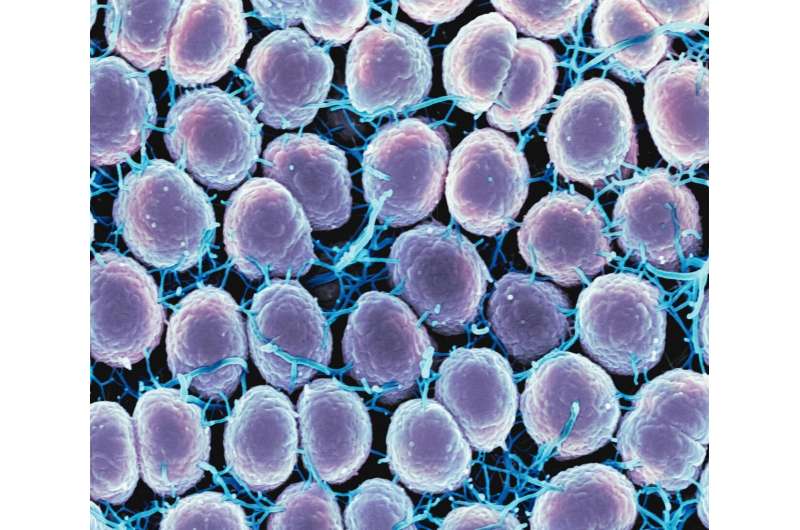This article has been reviewed according to Science X's editorial process and policies. Editors have highlighted the following attributes while ensuring the content's credibility:
fact-checked
peer-reviewed publication
trusted source
proofread
Collaborative study brings effective gonorrhea vaccine step closer

A study involving Kenyan sex workers illuminates the immune response to gonorrhea, paving the way for more effective vaccines.
Carried out by scientists at the Universities of Manchester and Oxford working in collaboration with the KEMRI/Wellcome Trust Unity in Kenya, the study is published in the journal Nature Communications.
The findings come amid recent reports showing gonorrhea—a sexually transmitted disease—is becoming increasingly resistant to antibiotics and could become untreatable in the future.
People infected with gonorrhea may experience pain or burning though, if untreated, they may go on to develop more serious problems including infertility, systemic infection and increased risk of HIV/AIDS. There are now multidrug resistant strains of the Neisseria gonorrheae (Ng) bacterium—which causes gonorrhea—making many antibiotics ineffective as first-line treatments.
The bacterium has a range of mechanisms to dampen immune responses, meaning there is insufficient immunological 'memory' to combat subsequent infections.
Attempts to develop a vaccine against gonorrhea have been largely unsuccessful. However, in 2017, a study showed that vaccination against a related bacterium Neisseria meningitidis (Nm) led to a reduction in the incidence of gonorrhea. Although the efficacy of the Nm vaccine against Ng was limited, it provided an important clue to making an effective Ng vaccine.
Working with a marginalized community of sex workers in coastal Kenya who have high exposure to gonorrhea, Prof Ed Sanders and his team in Kenya conducted a trial of an Nm vaccine to examine their immune responses. Prof Jeremy Derrick and the team in Manchester then identified the pattern of antibody responses in the vaccine recipients and compared them to individuals infected with gonorrhea.
To unpick the complicated antibody responses, the Manchester team fabricated a 'microarray'—a library of the different components, or antigens, which could react with the antibodies induced by the Nm vaccine. Using this powerful technology, the complex profiles of antibodies against the different components were determined for each vaccinee, or each infected individual.
Comparison of the profiles revealed a detailed picture of the antibody responses to the vaccine, and showing how they differ to those following infection.
The project lead Professor Chris Tang from the University of Oxford said, "This work takes an important step along the road to developing Ng vaccines, as we have a better idea of which responses are generated by partially protective vaccination compared with infection."
Professor Derrick added, "This study has wide implications about revisiting vaccine design for other bacterial pathogens using these new methods, including those where antimicrobial resistance is a problem. We hope that the application of these technologies will enable progress towards vaccines against other pathogens."
More information: Stejskal, L., et al. Profiling IgG and IgA antibody responses during vaccination and infection in a high-risk gonorrhoea population. Nature Communications (2024). DOI: 10.1038/s41467-024-51053-x


















